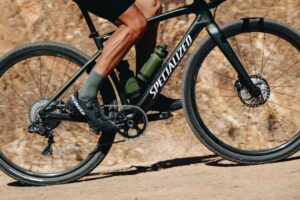Introduction
An e-bike is only as good as the battery that powers it — and the charger that keeps it running. Range anxiety is real: whether you’re commuting across town or tackling a weekend trail, a dead battery can end your ride fast. That’s why having the right charger and battery setup isn’t just convenient, it’s essential.
The e-bike market in 2025 has exploded with options, from stock OEM replacements to innovative solar-powered charging systems. But with so many choices, it can be hard to know which one is right for you. Should you stick with the battery that came with your bike? Upgrade to a higher-capacity pack? Or maybe invest in a fast charger to cut your downtime in half?
In this guide, we compare the best e-bike batteries and chargers available in 2025, covering OEM brands like Rad Power and Ride1Up, innovators like Mokwheel, budget-friendly options like Lectric, and universal aftermarket solutions. By the end, you’ll know exactly how to keep your e-bike powered up for every ride.
Rad Power Batteries & Chargers: Reliable OEM
Overview
Rad Power Bikes is one of the most recognized names in direct-to-consumer e-bikes, and they back up their popularity with a full line of replacement batteries and chargers. Their packs are designed for safety and seamless compatibility, making them a straightforward option for Rad owners.
Strengths
- Direct OEM compatibility — no guesswork.
- UL-certified for safety.
- Widely available through Rad’s online store.
Weaknesses
- Expensive: $500–$700 per battery.
- Standard charger is only 2 amps (slow).
- Limited to Rad models.
Best For
Rad Power riders who want peace of mind, guaranteed fit, and are willing to pay a premium for safety and warranty compliance.
Ride1Up: Affordable Commuter Power
Overview
Ride1Up has carved out a commuter-focused niche, offering sleek and affordable bikes. Their replacement batteries and chargers continue this trend — slim, lightweight packs paired with compact chargers.
Strengths
- More affordable than Rad ($400–$600).
- Slim, commuter-friendly form factor.
- Easy to carry and swap out.
Weaknesses
- Lower amp-hour capacity compared to fat-tire or adventure brands.
- Limited accessory ecosystem.
- Only available via Ride1Up directly.
Best For
Urban commuters and students who need a reliable, affordable battery for day-to-day use without the bulk of larger packs.
Mokwheel Solar Charging Ecosystem: Power Anywhere
Overview
Mokwheel isn’t just selling batteries — they’ve built an entire charging ecosystem. Their bikes support solar panels and inverters, turning your ride into a mobile power station. For RV owners, campers, and anyone who spends time off-grid, this is a game-changer.
Strengths
- Long range (50–85 miles per charge).
- Unique solar charging + inverter accessories.
- Rugged fat-tire bikes built for adventure.
- Step-through options available.
Weaknesses
- Higher cost: $1,600–$2,000 with accessories.
- Heavy: bikes often exceed 70 lbs.
- Overkill for short-distance commuters.
Best For
Adventurers, RV travelers, and riders who want serious power and the ability to charge gear while camping or off-grid.
Lectric: Budget-Friendly and Fast Charging
Overview
Lectric has exploded in popularity with its XP series of folding fat-tire bikes. Their batteries are smaller than Mokwheel’s, but they’re affordable, easy to swap, and supported by a 3-amp fast charger that cuts charging time significantly.
Strengths
- Very affordable ($300–$500 batteries).
- Fast charger reduces downtime by ~30%.
- Compact design great for commuters and students.
- Popular XP series has a strong resale market.
Weaknesses
- Lower capacity than premium brands.
- Durability reviews are mixed.
- Not ideal for very long-distance riders.
Best For
Budget-conscious riders who want quick charging and portability at a price point under $500.
Aftermarket & Universal Options (Grin, 3rd Party Packs)
Overview
Beyond OEM, there’s a thriving aftermarket for chargers and batteries. Companies like Grin Technologies sell universal chargers that can handle a wide range of voltages (36V–52V), while independent suppliers offer compatible battery packs at lower prices.
Strengths
- Flexible compatibility across brands.
- Fast chargers available (3–5 amps).
- Often cheaper than OEM.
- Customizable for DIY builders.
Weaknesses
- Risk of warranty voiding.
- Must double-check voltage, connectors, and dimensions.
- Quality varies widely across suppliers.
Best For
DIY enthusiasts, tinkerers, or anyone with older e-bikes that need custom solutions.
Comparison Table: Best E-Bike Batteries & Chargers 2025
| Brand / Option | Battery Range | Charger Amp | Price Range | Best Feature | Best For |
|---|---|---|---|---|---|
| Rad Power | 48V 14–20Ah | 2A | $500–$700 | OEM reliability | Rad owners needing OEM fit |
| Ride1Up | 48V 10–15Ah | 2A | $400–$600 | Slim commuter packs | City commuters, students |
| Mokwheel | 48V 19.6Ah | 2A + solar | $1,600–$2,000 | Solar charging ecosystem | Off-grid adventurers |
| Lectric | 48V 9.6–14Ah | 3A fast | $300–$500 | Fast charger option | Budget riders, commuters |
| Aftermarket / Grin | 36–52V, 10–20Ah | 3–5A | $300–$800 | Universal compatibility | DIY and custom builds |
Which Should You Choose?
- Choose Rad Power if you already own a Rad and want OEM reliability, safety, and warranty support.
- Choose Ride1Up if you’re a commuter who values affordability and lighter, slimmer packs.
- Choose Mokwheel if you’re an adventurer who wants long range and off-grid charging options.
- Choose Lectric if you’re on a budget but still want faster charging and portability.
- Choose Aftermarket/Grin if you’re comfortable tinkering and want flexibility across multiple bike types.
Final Verdict
Your e-bike’s performance depends heavily on its battery and charger setup. OEM solutions like Rad Power and Ride1Up are simple and reliable. Mokwheel innovates with solar-powered charging for adventure riders, while Lectric delivers affordable options with a fast-charge advantage. For the tech-savvy, aftermarket solutions like Grin open up customization and flexibility.
No matter which you choose, one rule holds true: invest in quality. Batteries and chargers are the lifeblood of your e-bike — and reliable power keeps you safe, mobile, and ready for the ride ahead.
Related Links:
- Ride1Up Bikes Review
- Aventon vs Rad Power
- Aventon Review
- Best Commuter E-Bikes Guide
- Best Affordable E-Bikes Guide
Why Trust This Guide?
Jeffrey South is the founder of Best Bike Brands. With over 30 years in the cycling world as a shop owner, mechanic, and industry insider, he now shares reviews, guides, and insights to help riders choose the best bikes and gear with confidence.




